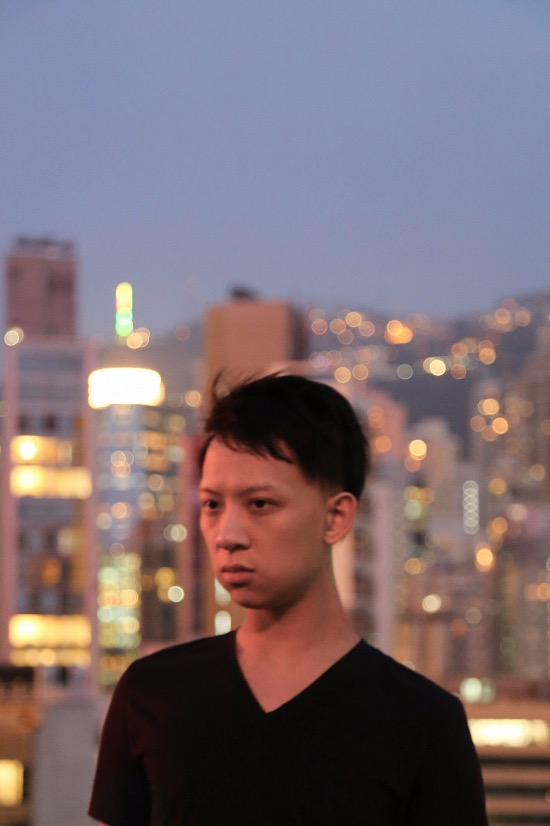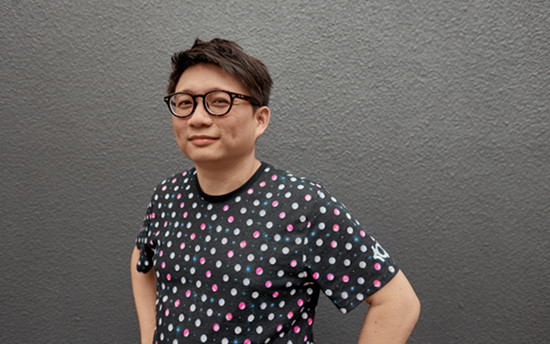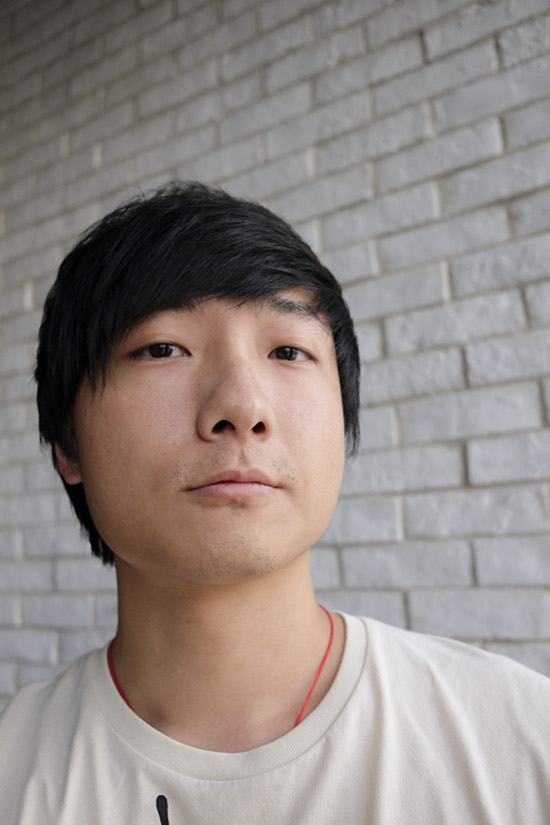
6 of Asia’s Most Exciting Up-and-Coming Creative Technologists

Creative technology in Asian advertising is an area of both requirement and endless opportunities. The sheer vastness of countries like China make digital the most suitable method to communicate with consumers in far-flung areas, while Korea’s endless, super speedy, public Wi-Fi connections open up doors yet to be unlocked in other markets. The people in charge of taking the reigns on such projects are the creative technologists; the hackers, the tinkerers. LBB’s Addison Capper scoped out some of the most exciting, young, up-and-coming creative technologists that Asia has to offer.
Ethan Chiu, Senior Creative Developer, AKQA Shanghai

What makes Shanghai so exciting right now?
For me, Shanghai is the beating heart of China, setting the bar for expectations across Asia. You can easily find yourself in the slow lane of its rapidly accelerating creative technology environment, and it is this speed of progress that is very exciting.
WeChat today is not just a chat app – it is an entire platform and ecosystem allowing for frictionless user identification and enabling effortless payments. Together with the widespread presence of physical QR codes, and WeChat’s inclusion of a QR Code scanner right at your fingertips, digitally integrated services can be provided anywhere.
Shanghai has a particularly large population and an emphasis on luxury and prestige. To satisfy that demand, brands can no longer rely on expensive materials alone to be seen as premium. They must leverage technology to add magic to their products and services to continue to be seen as high end. This is particularly exciting as brands are open to innovative and creative ways of using technology to differentiate themselves.
Which other city in Asia is exciting you? Why?
I think Seoul is one of the most stimulating cities in Asia. With early adoption of the latest mobile networking technologies, its population has incredibly speedy mobile access. This means creatives and developers can provide richer, more media-immersive experiences.
Which piece of technology do you think will make the biggest impact on the ad industry in the next year and why?
I believe VR will make a huge impact during next year. In its current state, due to weight, comfort and battery life restrictions, VR is especially good for short-term use, which makes it a great fit for the ad industry. However, I think by next year, 360-degree videos will be rather old and boring. Instead we will find more creative uses for VR that will include greater interactivity, either digitally or physically, to keep things fresh and engaging.
What is your all-time favourite piece of tech and why?
My favourite piece of tech is Lego Mindstorms. It brought together the building blocks of Lego with the magic of software and robotics. It will always be special to me because it was my first introduction to technology, and more specifically, the creative use of technology.
It is not only simple to learn, but incredibly fun to play with – just as programming should be. Nowadays, Lego has expanded the number of sensors and motors (input and output) and people have created some mind-blowing pieces of work.
Joey Tiempo, ECD at TBWA\ Digital Arts Network Manila, Philippines

What makes Manila so exciting right now?
Makati City has been proclaimed the Selfie Capital of the World, and this doesn’t come as a surprise to us – our country is obsessed with smartphones. Mobile is huge in the Philippines, and mobile apps are changing the way we live. With many Filipinos working abroad, apps that allow us to mend our fragmented families by constantly sharing our experiences (selfies included) are indispensable. I’m particularly excited how VR will play a role in this cultural context.
Which other city in Asia is exciting you? Why?
Tokyo, the most advanced city in the world! I wonder what they will think of next.
Which piece of technology do you think will make the biggest impact on the ad industry in the next year and why?
Social VR. We used to think virtual reality is a lonely place to be, but that will change when it allows us to share personal experiences with other people – and will definitely affect the way we craft our communications campaigns.
What is your all-time favourite piece of tech and why?
I love sci-fi novels, and I realise we now live in a world where we all have personal robots that fit inside our pockets: our smartphones. The smartphone will remain to be my all-time favourite piece of tech until someone invents the teleportation pod.
Rollen Gomes, Senior Software Engineer, APAC Prototype Studio, R/GA Singapore

What makes Singapore so exciting right now?
Singapore is exciting. There are a lots of innovative startups. Universities are providing a lot of innovation and entrepreneurship programmes. The next generation of graduates will be fascinating to watch.
Which other city in Asia is exciting you? Why?
Shanghai is a wonderful place. Creatives are building great technologies there, most of the time exclusively for the Chinese market. China is not just a copycat anymore, they are now leading the way in digital usage.
Which piece of technology do you think will make the biggest impact on the ad industry in the next year and why?
The Internet of things (IoT) combined with machine learning shows great promises. It will allow for intelligent decisions to be made based on context and location.
What is your all-time favourite piece of tech and why?
3.5 inches floppy disks are my all-time favourites. I was mainly using them to share programs with my friends. This shows how software can help in reaching people.
Emir Shafri, Creative Director, Y&R Malaysia

What makes Kuala Lumpur so exciting right now?
The ingredients for any good tech ecosystem are savvy users, a pool of inspired local makers, and a decent infrastructure to support the tech.
First off, Malaysian consumers have become extremely savvy, especially with mobile technology. In fact, the mobile penetration here is higher than the United States (UBS, 2014). And more Malaysians actively shop online on their mobile than the Americans, the Brits, the Germans and the Australians. Naturally, Malaysians have been extremely open to adopting new mobile-enabled platforms and technologies like wearables and VR.
On the one hand, savvier users mean more discerning users, so everything from usability to development has to be thought through well. But on the other hand, this means that creative technologists in Malaysia have a bigger opportunity than ever to experiment and create for the Malaysian user.
Secondly, our pool of local makers has been exponentially growing. We’ve got public agencies like MaGIC, as well as organisations like Founder Institute and Lean Startup Machine helping to create a healthy startup ecosystem by identifying, training and celebrating local startups. And with coding being added to the school curriculum next year, a very constructive local community of creative technologists and makers, and of course, the accessibility of knowledge nowadays on the Internet, our community of tech makers will continue to grow. We’re already home to Southeast Asia’s largest unicorn (billion dollar) startup, Grab. We’re bound to give birth to more unicorns soon, as well as more talented local makers.
Finally, the country has been investing heavily in its connectivity infrastructure to help support all these tech platforms. 4G LTE coverage has become more available and accessible. In fact, one of the biggest telcos here has just announced an unlimited 4G plan going at just RM79 a month (that’s less than US$20). Malaysia also recently committed to beefing up its Internet of Things ecosystem by establishing a nationwide wireless wide area network technology for low-bandwidth devices, like IoT sensors and appliances, using the LoRa protocol.
It’s going to be exciting times for the local creative tech scene!
Which other city in Asia is exciting you? Why?
There’s a lot of friendly sibling rivalry between Malaysia and our neighbours down south, so at the risk of losing my passport, I’m going to say Singapore. And not just because I’ve spent several years working there (I previously was the Head of Digital back in Y&R Singapore prior to returning home to take up my current role).
I think what they’re doing with the Smart Nation initiative is amazing, which went beyond just developing advanced infrastructure, attracting great tech talent and building a robust startup ecosystem. They’ve been investing in a lot of brilliant cool initiatives, like their open data project, a positively surprising initiative from a government that some may view as “closed”. The open data initiative allows any company or citizen to access data sets and real-time data APIs from all sorts of public agencies, ranging from transport providers to the Public Utilities Board, so they could co-create solutions to improve the nation with the government.
One of the main drivers of this Smart Nation initiative is the very un-government-like Government Digital Services team. They employ data scientists, UX designers, hackers, coders and makers who work together to develop solutions for a smarter nation in t-shirts and jeans, in a building that’s inspired by the Sandcrawler from the Star Wars universe. They use tools that seem more at home in a startup than a government agency, like GitHub to collaborate, competitive coding to hire talents, and the agile methodology to fail fast and keep iterating.
We’re talking about a civil service that has a reputation for only hiring top university scholars with perfect GPAs, embracing failure as a critical part of building a smarter nation. That surprising change in itself makes Singapore deserving of the “most exciting Asian city” spot.
Which piece of technology do you think will make the biggest impact on the ad industry in the next year and why?
I think location-powered tech would be making an increasingly bigger impact in our industry in years to come. Firstly, we’re seeing greater mobile penetration rates, more affordable high-speed mobile data connectivity, savvier mobile users and greater availability of Beacons (which enables the app to figure out where it is indoors, amongst other things). Secondly, with games like Pokémon Go, using location-based utilities and games have become normal behaviour for users. Heck, they’re willing to stop traffic and walk for miles in the hopes of catching a rare Pokémon.
We’ll start seeing more brands combining location data and gamification. For example, shopping malls could offer points and deals the more you explore different stores in the mall, in order to increase footfall in an age where people are increasingly shopping online.
We’ll also see location data being used for analytics, so the same mall could create a heat map of visitors – like a physical “Google Analytics” – to improve its layout and retail mix, as well as allow tenants to test the effectiveness of point-of-sale marketing in pulling in customers (much like A/B testing for online ads).
Online ads will use more specific location-based targeting to gain context, so for example, a visitor at the shopping mall who’s spent time in a women’s apparel store could be given an offer with directions to a cosmetics store to complete their look within the same mall.
Location information will also continue to play an important role in enhancing technologies, including AR and VR technologies. And with more location-based games and utilities encouraging us to explore the physical world, location-powered tech will probably be making a big impact on our waistlines too!
What is your all-time favourite piece of tech and why?
Definitely Artificial Intelligence. It has the potential to make the work that we do smarter, faster.
Imagine applying Machine Learning to help user interfaces “learn” and adapt, the more people use them. Based on how other users like you use the interface, it would then adapt the layout and information architecture to serve you an experience and content that you would likely find more useful and usable. And as you’re using it, it’s constantly learning how to improve itself better, with minimal to no human interference needed.
Another thing I’m looking forward to is A.I. combining with natural language processing and image recognition to understand the human psyche from the wealth of social data out there. Imagine content that would naturally adapt itself based on how you’re feeling. Or algorithms that learn from the images the target audience likes and the comments they make on these images to judge and recommend layouts and interfaces, and even guide our talent casting decisions.
We’re also seeing A.I. that’s able to create. There’s A.I. created art, and even A.I. composed music. We also have self-modifying programmes that can constantly refine and build on its own code, with limited human intervention.
With initiatives like Facebook’s FAIR and Google’s DeepMind, as well as the exponentially increasing pool of data from digital platforms, devices, IoT appliances that will help A.I. understand our inner workings better, A.I. will only get smarter.
Pretty soon, we’ll have A.I. art directors, A.I. content writers, A.I. casting directors, A.I. composers and A.I. developers working alongside us. That’s not to say they’d replace our jobs. Like any tool, these programmes would still be reliant on our humanity and instinct to make creative leaps. For the near future, that is.
To reference The Simpsons, I for one welcome our new robot overlords.
Alan Leong, Digital Creative Director, J. Walter Thompson Singapore

What makes Singapore so exciting right now?
It’s definitely Singapore’s ‘Smart Nation’ vision where people are empowered by technology to lead meaningful and fulfilling lives – creating new creative opportunities. With the help of the government as an enabler and catalyst to encourage innovation, local and global technology companies can come together to create exciting products.
Which other city in Asia is exciting you? Why?
The beautifully-chaotic country called China. It's also the source of many startling innovations. If you’re a passionate techie, this will be a great place for your startup and development.
Which piece of technology do you think will make the biggest impact on the ad industry in the next year and why?
Virtual reality and augmented reality. Both fields are really growing and will continue to do so in the near future. I think it is a unique storytelling platform. There’s lots of untapped opportunities we haven’t thought of yet. For instance, social, health, education and training. Brands need to use it with a meaningful purpose beyond profit. There’s lots of careful planning and user experience thinking needed in the process.
Lokfu Wong, Senior Interaction Designer, Isobar China

What makes Shanghai so exciting right now?
Shanghai is one of the largest cities in China and is always leading the market. While it isn’t a city that creates new technology, it is a good place to experiment with technology. Being diverse and cosmopolitan, there are a lot of forward-thinking people and they all want a piece of the cake (or a slice of the pie).
The clients recognise that if they want to grab market share, they need to do something different to attract consumers (and show the world how innovative they are). On the other side, agencies and creatives are using new technology to create something unique to stand out.
So ultimately, it is a win-win, as agencies and creatives always have support from the clients to execute a creative technology project.
Which other city in Asia is exciting you? Why?
Tokyo is one city that I always keep an eye on. Magic always happens when ‘cold’ technology meets a ‘warm’ human touch, and the Japanese are good at bringing them together. This is especially in the areas of robotics, be it an art piece or commercial.
Which piece of technology do you think will make the biggest impact on the ad industry in the next year and why?
I think artificial intelligence will give us a lot more surprises in the coming year. Usually, we know what the outcome from our work is because we have to decide on the results we want to achieve from all the different situations. But with AI it is constantly learning on its own, it can end up surprising people.
What is your all-time favourite piece of tech and why?
I really like things that can enable me to interact with people. So my favourite piece of technology would have to be physical computing. It forms a bridge between human and machine, allowing humans to talk and play with machines. I always get excited when there is something new in this space, because it means we might have new ways of interacting, and possibly even changing human behaviour.
Jess Zhu, VP of Product – Programmatic, AudienceScience

What makes Shanghai so exciting right now?
Despite having the highest mobile penetration in the world, China’s mobile marketing space is still just emerging. With programmatic still in its infancy, measurement and advertising standards still being defined, and consumer privacy and fraud protection just coming to forefront, there is a huge opportunity here for technologists, publishers, and marketers alike.
Which other city in Asia is exciting you? Why?
Tokyo – As one of the highest digital buyer penetration markets in the world with heavy mobile consumer engagement and a more mature programmatic environment, Japan is a testbed for innovation in new engagement formats, ecommerce, etc.
Which piece of technology do you think will make the biggest impact on the ad industry in the next year and why?
Viewability and NHT (non human traffic) measurement. With increased demand from advertisers to only pay for impressions served to human users who saw their ads, fraud detection and viewability guarantees will require publishers and technologists to adapt their product offerings and block non-human traffic – hopefully creating better consumer experiences overall. Viewability and NHT measurement in-app is still in development, but when it fully launches, it will be the first notable constraint that mobile publishers/exchanges will need to respond to.
What is your all-time favourite piece of tech and why?
Introduction of VAST, HTML5 and OpenRTB standards. These standards have really enabled the digital programmatic industry to scale and work together more seamlessly, and reduce the manual operational overhead that previously persisted in the industry. These types of standards make digital more accessible and flexible – giving all players in the ecosystem the flexibility to partner with and choose between more providers, vendors, and experiences.













